SUE Brochure
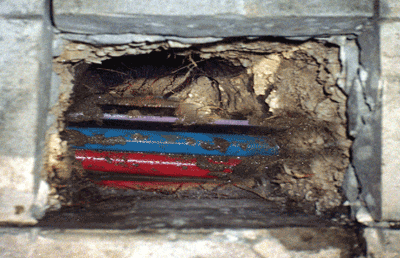
Subsurface Utility Engineering is not confined to highways. It can be used with good results on airport, railroad, transit, building construction, military, sanitation, nuclear, and any other public works project where underground utilities may be encountered. It can also be used for environmental purposes, such as detecting and mapping underground storage tanks, septic fields, and even contaminants. SUE adds value, quality, and accountability to any project.
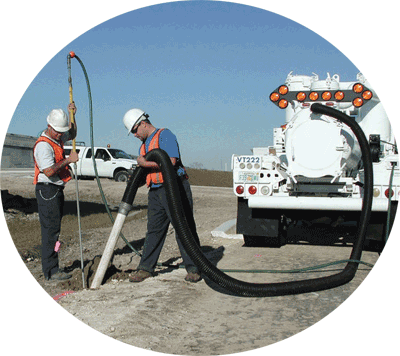
Testimonials
"The Federal Highway Administration has been encouraging the use of Subsurface Utility Engineering on Federal-aid highway projects since 1991. Proper use of this cost-effective professional engineering service will eliminate many of the utility problems typically encountered on highway projects. Using this technology, it will be possible to avoid many utility relocations before construction and many unexpected encounters during construction, thereby eliminating many costly, time-consuming project delays."
Dwight A. Horne
Director, Office of Program Administration
Federal Highway Administration
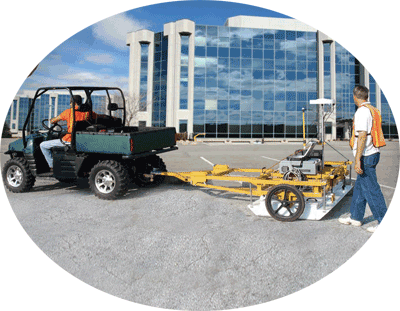
"The SUE process, specifically the assignment of "Quality Levels" to the utility data collected, provides valuable engineering information from which to make risk-based decisions that characterize the delivery of transportation projects. At TxDOT the use of SUE in project planning and design allows us to avoid unnecessary impacts to existing utilities and to save the incalculable costs of adjustments not required and delays never imposed on the progress of a transportation project's construction."
John P. Campbell, P.E.
Chair, AASHTO Subcommittee on ROW & Utilities
Director of Right of Way, Texas DOT
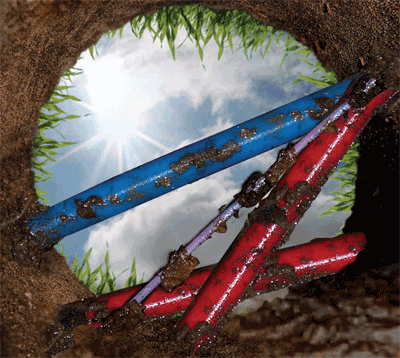
Subsurface Utility Engineering
Over the decades, highway designers have had a difficult time obtaining reliable subsurface utility information. Now, this information is available through the use of an engineering process called Subsurface Utility Engineering.
Major SUE Activities:
Scope of Work - The process of developing a written project-specific work plan package that consists of scope of work, levels of service vs. risk allocation, project schedule and desired project delivery method. This SUE work plan package is agreed upon by the SUE provider and the client, describing the SUE work to be performed.
Designating - The process of using a surface geophysical method or methods to interpret the presence of a subsurface utility and mark its horizontal position on the ground surface or on above-ground surface markers.
Locating - The process of exposing and recording the precise vertical and horizontal location and providing utility size and configuration of a utility.
Data Management - The process of surveying, designating, and locating information to project control and transferring it into the client's CADD system, GIS files, or project plans.
Conflict Analysis - The engineering process of using a conflict matrix to evaluate and compare depicted designating information with proposed plans (highway, bridge, drainage, and other) in order to inform all stakeholders of potential conflicts, potential resolutions and costs to cure.
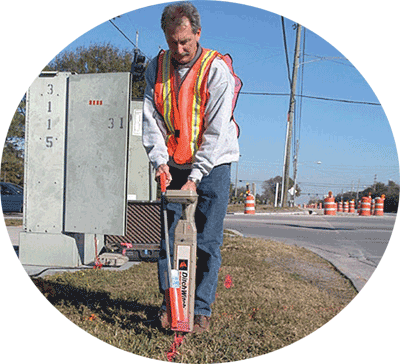
Standard Of Care
The American Society of Civil Engineers (ASCE) has developed an important standard of care guideline, Standard Guideline for the Collection and Depiction of Existing Subsurface Utility Data, CI/ASCE 38-02.
This standard guideline describes four quality levels of utility depiction:
Quality Level D - Information derived from existing records or oral recollections.
Quality Level C - Information obtained by surveying and plotting visible above-ground utility features and by using professional judgment in correlating this information to Quality Level D.
Quality Level B - Information obtained through the application of appropriate surface geophysical methods to determine the existence and approximate horizontal position of subsurface utilities.
Quality Level A - Precise horizontal and vertical location of utilities obtained by the actual exposure and subsequent measurement of subsurface utilities, usually at a specific point.
To order a copy of ASCE Standard 38-02, please go to the ASCE Bookstore: http://www.pubs.asce.org/ or call 1-800-548-2723.
Project Application
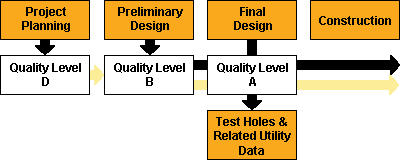
SUE Expertise
Competence. SUE providers should be able to demonstrate a thorough knowledge and understanding of the major SUE activities and should be able to provide these services to the extent desired by the contracting agency.
Experience. Individuals assigned by the SUE provider to carry out the work should be well-trained, experienced, and capable. Those in responsible charge of the work and responsible for certifying deliverables should be engineers, geologists, and land surveyors employed by the SUE provider in accordance with state professional registration requirements.
Equipment. A wide range of equipment is necessary to detect the variety of subsurface utilities that may be present. Equipment available for utilization by the provider should include, but not be limited to, state-of-the-art designating equipment; vacuum excavation or comparable non-destructive locating equipment; state-of-the-art surveying and data recording equipment; and software systems compatible with those of the contracting agency.
Timeliness. Resources of the provider should be adequate to carry out the SUE work in a timely manner, considering other possible commitments of work and the contracting agency's anticipated needs.
Financial Capacity. SUE providers should have the financial capacity to provide the required services.
Insurance. SUE providers should have adequate insurance covering all aspects of work. Minimum amounts should be in accordance with the contracting agency's requirements.

